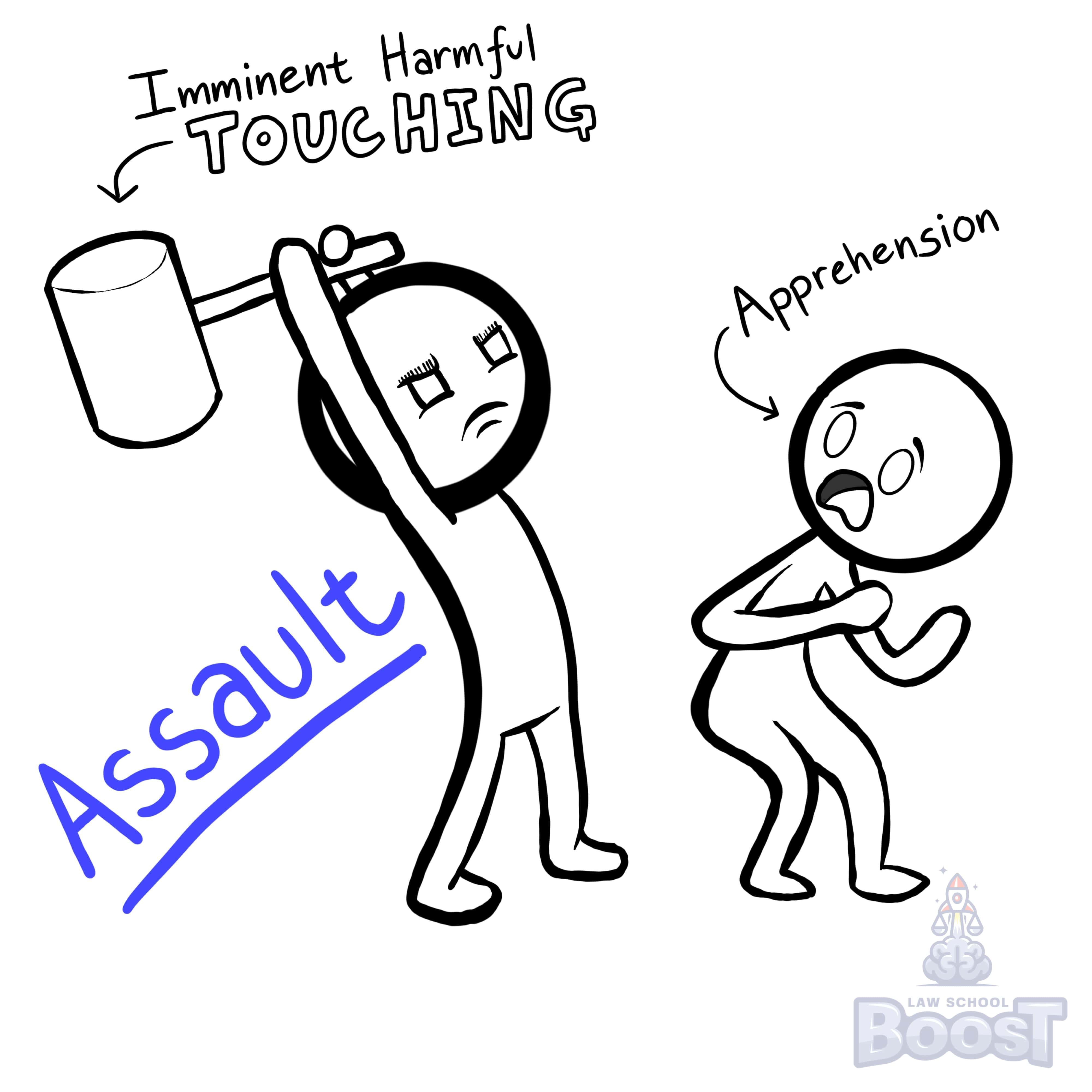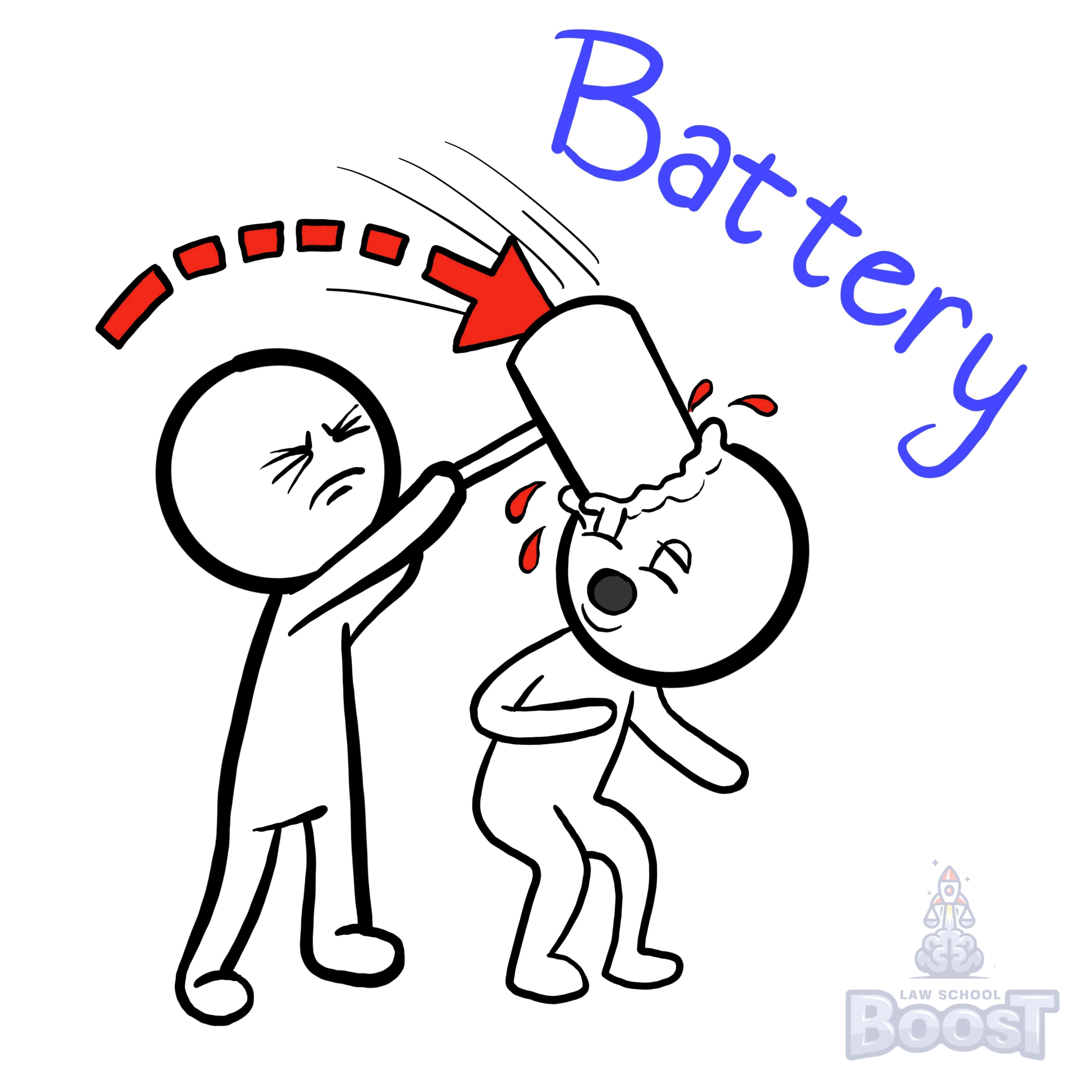💕
Criminal Law • Excuse
CRIMLAW#027
Legal Definition
Assault is a specific intent crime where the defendant attempts to cause imminent harmful contact with the victim (i.e., attempted battery). In contrast, it is a general intent crime where the defendant intentionally creates a reasonable apprehension in the mind of the victim of imminent bodily harm.
Plain English Explanation
Assault is a crime that can happen in two ways depending on what the person intends to do.
In the first type, called specific intent assault, the person wants to actually hurt someone. They may not succeed, but their goal is to hit or touch the other person in a harmful way. Think of it like swinging a punch at someone but missing. Even though the punch didn’t land, the person’s intention was clear: they were trying to harm the other person. This is known as an attempted battery, and it's considered more serious because the person tried to cause harm directly.
In the second type, called general intent assault, the person doesn’t have to try to hit or touch the other person. Instead, they do something that makes the other person fear that they are about to get hurt. For example, if someone angrily raises their fist and makes you think they’re about to punch you, even if they don’t follow through, this can still be assault. The key here is that the victim reasonably believes they’re in danger of being hurt. The person didn’t necessarily plan to harm them, but they acted in a way that made harm seem likely.
In the first type, called specific intent assault, the person wants to actually hurt someone. They may not succeed, but their goal is to hit or touch the other person in a harmful way. Think of it like swinging a punch at someone but missing. Even though the punch didn’t land, the person’s intention was clear: they were trying to harm the other person. This is known as an attempted battery, and it's considered more serious because the person tried to cause harm directly.
In the second type, called general intent assault, the person doesn’t have to try to hit or touch the other person. Instead, they do something that makes the other person fear that they are about to get hurt. For example, if someone angrily raises their fist and makes you think they’re about to punch you, even if they don’t follow through, this can still be assault. The key here is that the victim reasonably believes they’re in danger of being hurt. The person didn’t necessarily plan to harm them, but they acted in a way that made harm seem likely.
Hypothetical
Hypo 1: Bob hates Sam. One day, Bob sees Sam walking down the sidewalk. Bob runs towards Sam with a knife. Sam, startled by Bob, screams causing a water glass to shatter. Bob slips on the water and Sam runs away. Result: This is a "failed battery." Bob had every intention to stab Sam, but he was unable to complete his battery. This attempted battery still caused Sam to feel an apprehension of an imminent harmful or offensive touching and, as a result, means that Sam was assaulted by Bob. Here, Bob's assault was a specific intent crime.
Hypo 2: One day, Bob decides to juggle knives while walking down the sidewalk. As Sam watches Bob approach him, he is terrified that he is going to get cut by one of the several knives Bob is throwing into the air. Result: Bob had no intention of harming Sam, however, he created a reasonable apprehension in the mind of Sam that he may get hurt. Why is it reasonable? That's for you to argue on the exam. Unless you're a super trusting person, walking down a crowded sidewalk and seeing someone throw knives in the air should likely give you at least a little bit of fear or anxiety of being harmed. Because Bob didn't intend Sam to feel threatened, this is a general intent example of criminal assault because he generally intended to do the thing that resulted in fear.
Hypo 2: One day, Bob decides to juggle knives while walking down the sidewalk. As Sam watches Bob approach him, he is terrified that he is going to get cut by one of the several knives Bob is throwing into the air. Result: Bob had no intention of harming Sam, however, he created a reasonable apprehension in the mind of Sam that he may get hurt. Why is it reasonable? That's for you to argue on the exam. Unless you're a super trusting person, walking down a crowded sidewalk and seeing someone throw knives in the air should likely give you at least a little bit of fear or anxiety of being harmed. Because Bob didn't intend Sam to feel threatened, this is a general intent example of criminal assault because he generally intended to do the thing that resulted in fear.
Visual Aids



Related Concepts
How does the age of a perpetrator affect their criminal liability?
Under the Durham Test ("But For"), when is a defendant insane?
Under the Irresistible Impulse Test (volitional), when is a defendant insane?
Under the M'Naghten Test (cognitive), when is a defendant insane?
Under the Model Penal Code test (M'Naghten + Irresistible Impulse), when is a defendant insane?
What are the most common excuses to committing crimes?
What is aggravated kidnapping?
What is criminal battery?
What is involuntary intoxication, and when is it a valid defense?
What is kidnapping?
What is voluntary intoxication, and when is it a valid defense?


